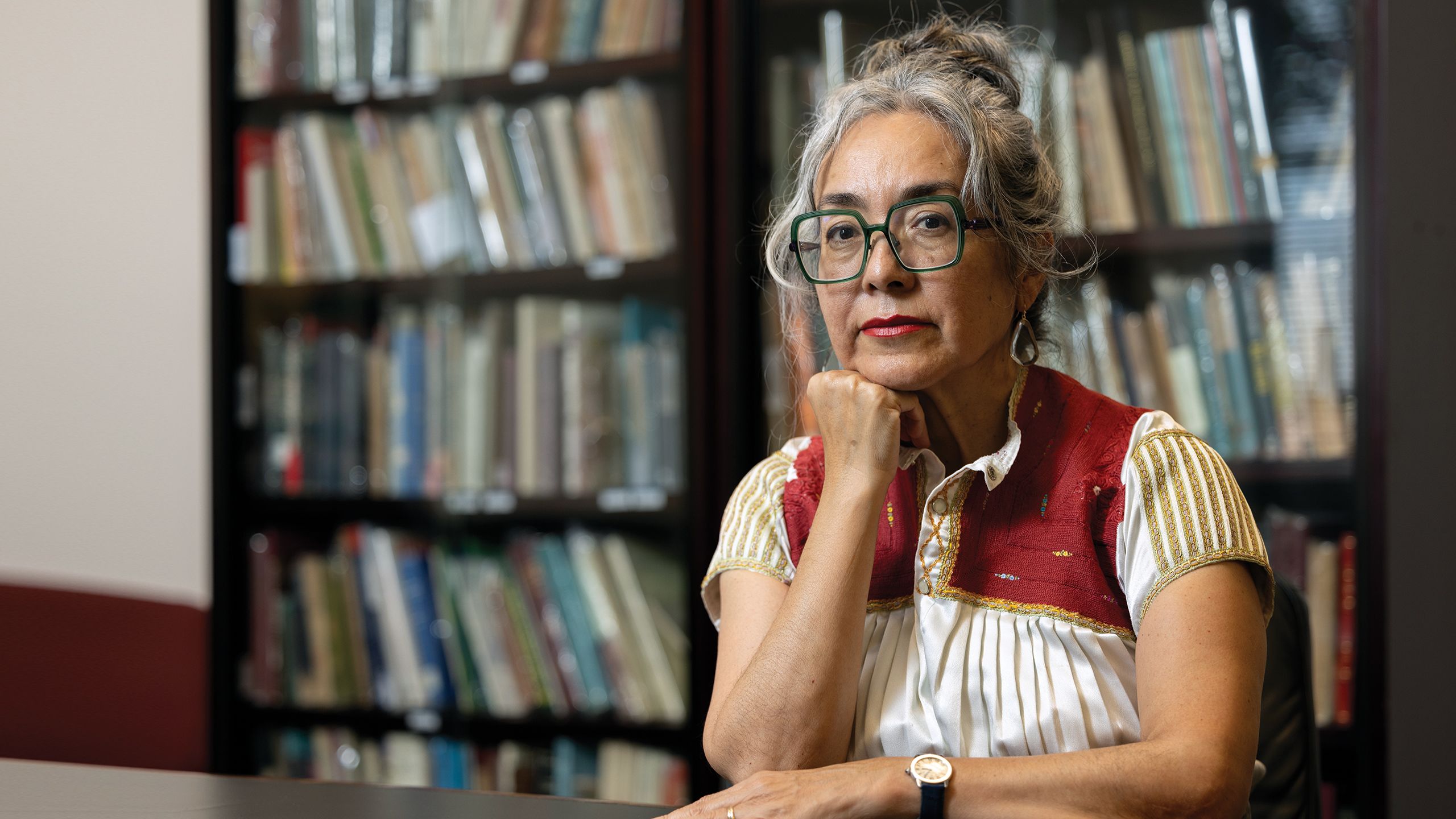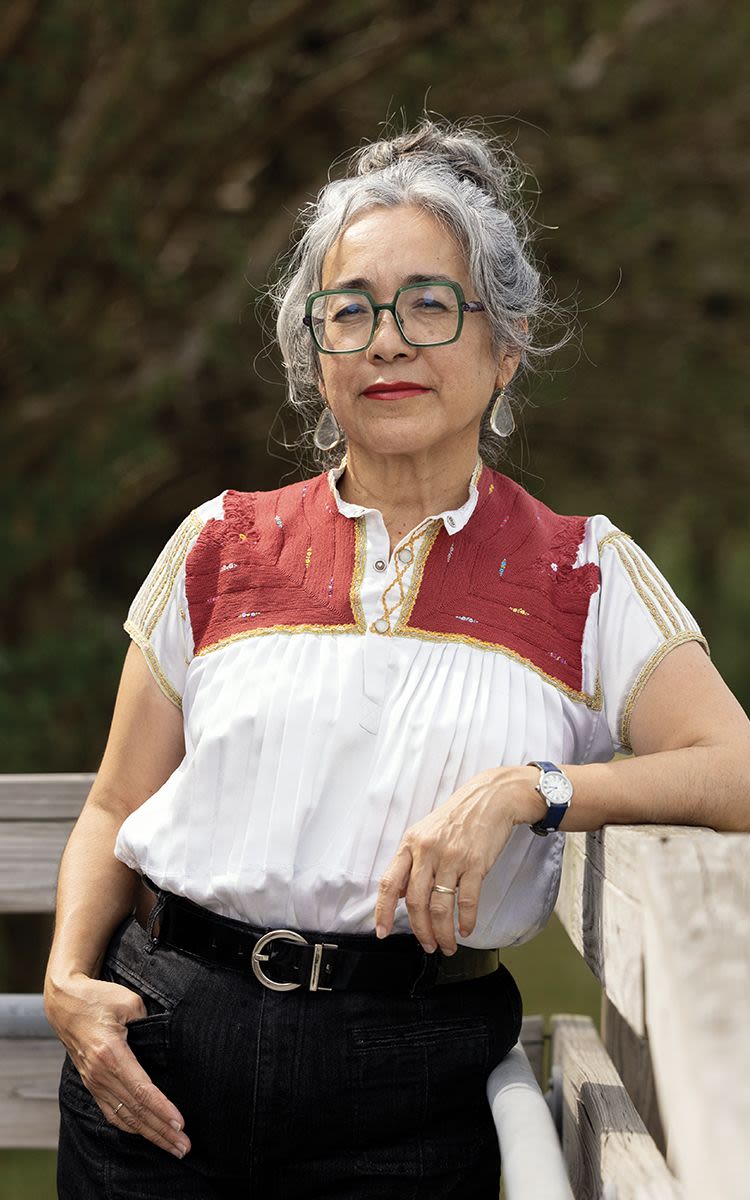The Memoirist
Through writing her Pulitzer Prize-winning memoir, UH professor Cristina Rivera Garza gets justice for her murdered 20-year-old sister — but not in the way she thought.
By Cristina Rivera Garza, as told to Tyler Hicks

Rivera Garza considers her award-winning book a work of "documentary fiction."
Rivera Garza considers her award-winning book a work of "documentary fiction."
Cristina Rivera Garza is the M.D. Anderson Distinguished Professor in Hispanic Studies at the University of Houston and director of the Ph.D. program in creative writing in Spanish, through which aspiring writers hone their craft writing in the language.
They couldn’t ask for a better teacher. Rivera Garza’s admirable body of work, which includes six novels, three collections of short stories and three nonfiction books, has earned her a MacArthur Fellowship “genius grant” and other prestigious prizes. (For example, she is the only two-time winner of the Sor Juana Inés de la Cruz Prize, awarded for a book written in Spanish by a female author.)
Now, thanks to “Liliana’s Invincible Summer,” Rivera Garza has added Pulitzer Prize winner to her impressive CV.
The book, published in 2023, is ostensibly a memoir chronicling the author’s grief and search for answers, though Rivera Garza says she prefers the term “documentary fiction.” It merges Rivera Garza’s deft reportage and introspective prose with her late sister’s own writings, including journal entries, newspaper stories and a literary journal submission, which bring Liliana to life in her own words.
My sister was 20 years old when she was murdered in her apartment in a Mexico City borough. I spent more than 30 years trying to write about it, and I began writing this book, “Liliana’s Invincible Summer: A Sister’s Search for Justice,” thinking that I would be able to open up her case again.
I thought I’d finally get justice.
Time has shown me that it’s not going to be the case — at least not in the way I thought.
Creating ‘Documentary Fiction’
I’m the director of UH’s creative writing program in Hispanic Studies, where we get these wonderful, gifted students from all over the Spanish-speaking world. In my classes, we discuss issues across genre writing, including the uses of archive materials in fiction and nonfiction writing.
My students have helped me realize that my book is a work of documentary fiction because of the heavy emphasis I place on archival materials, including my sister’s writings. You could read this book as an archive of sorts, in which I’ve used heavily the experiences and words of Liliana’s friends, family members and her own newspaper clippings.
Once I got to read her letters, I got to see blueprints of all the things that were relevant in her life. I understood that, this time, I was going to be able to go ahead with the project. I understood that I was not writing about my sister but with my sister. I didn’t want to be the story either. I wanted her to remain the main character, the main energy of this book.
Liliana was full of dreams — a competitive swimmer who loved movies, motorcycle jackets and the occasional cigarette. Her murder haunted me and our family, partly because we know who did it: her abusive ex-boyfriend, who fled Mexico City before he could be held accountable.
“Being able to articulate Liliana’s story and share her truth places her back in our lives as a memory — not just a personal memory but a memory of entire communities.”

Liliana Rivera Garza
Liliana Rivera Garza
A Different Kind of Justice
I didn't find the case files, but through other materials and in my conversations with lawyers and activists of those we’ve lost to femicide (wherein a woman is murdered simply because she is a woman), I saw there is something called restorative justice.
Restorative justice is a justice we can all participate in; it’s a justice of collective memory and truth. In this case, being able to articulate Liliana’s story and share her truth places her back in our lives as a memory — not just a personal memory but a memory of entire communities.
I have to admit that, for many years, the grieving process that my family and I went through was forcibly silent and full of guilt and shame. So being able to write this story in this way was a transformation, because something akin to a small, radical revolution takes place when more than one person decides to miss someone.
The book, I hope, allows readers to get to know Liliana in great detail. And once you do that, my hope is that you, as a reader, will be able to miss her as much as we do — those who were graced by her love.
Maybe you can call it healing.
Because I think a healing process begins when we all collaborate, contribute and participate in the making of these collective histories and collective memories.
I can see a very close connection between what I discussed [in the book] and what I bring into the classroom. I bring in my ideas, the complexity and the challenges that I, myself, am going through, and I share those with the students.
To write a book and discuss those ideas in the safe place that is a classroom has always been very productive for me, and very often, I’m touched by my students’ perspectives too.




